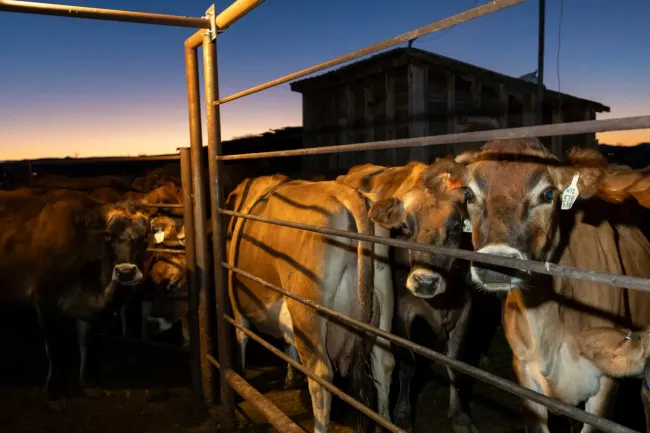Avian Influenza Evolves: From Wild Birds to Livestock – Is the World on the Brink of a Deadly Pandemic?
The bird flu, also known as avian influenza, has entered a potentially more dangerous phase, raising concerns among scientists and public health officials. Initially originating in wild aquatic birds, the virus has reached troubling milestones, including suspected reinfections in livestock. Although experts stress that a pandemic is not inevitable, the evolving situation demands careful monitoring.
Recent Developments
The H5N1 strain of bird flu has exhibited several alarming trends in recent weeks:
- Reinfection in Livestock: Cattle in Idaho that displayed symptoms of H5N1 in the spring were reportedly reinfected in late fall. While the U.S. Department of Agriculture reported no new cases in Idaho herds since October, state officials confirmed milder infections in November.
- Virus Persistence: The reinfections suggest the virus may persist on farms, potentially establishing itself within livestock populations. This increases the risk of further evolution and long-term circulation.
Expert Insights
Scientists and public health officials have highlighted the seriousness of the situation:
- Louise Moncla, Evolutionary Biologist
Moncla cautioned that the persistence of H5N1 in livestock could create a “high-risk” scenario. She warned that undetected circulation of the virus in dairy herds might allow it to evolve into more dangerous forms, making it harder to detect and control. - Dr. Nirav Shah, CDC Principal Deputy Director
Dr. Shah described H5N1 as a “dangerous virus” while noting that its current risk to the general public remains low. However, he stressed that the virus’s ability to evolve could significantly alter the risk profile, requiring constant vigilance.
Impact on Wildlife and Humans
The bird flu’s effects have been widespread, impacting wildlife, livestock, and, to a lesser extent, humans:
- Bird Populations
Since January 2022, over 136 million birds in the United States have been infected or killed by H5N1. The virus has devastated both wild and domestic bird populations. - Other Species
H5N1 has crossed species barriers, infecting mammals such as raccoons, cats, bears, and sea lions. This interspecies spread raises concerns about the virus’s potential to adapt further and pose a greater threat to humans. - Human Cases
Human infections remain rare, with only a few dozen reported cases and one confirmed death. Most infections have occurred in individuals with close contact with infected birds or animals.
Historical Context
The bird flu is not a new phenomenon. Its history offers valuable insights:
- In the 1990s, a strain of avian influenza emerged in East Asia, infecting approximately 940 people and resulting in a nearly 50% mortality rate. These cases were largely linked to close contact with infected birds.
- The current H5N1 strain continues to pose risks to both animals and humans, underscoring the need for vigilance.
Preventive Measures and Future Outlook
Public health experts emphasize the importance of proactive measures to manage the risks associated with H5N1:
- Surveillance
Ongoing monitoring of bird and livestock populations for signs of infection is critical. - Reporting
Timely reporting of new cases ensures rapid response and containment. - Prevention
Strengthened biosecurity measures can help limit the spread of the virus among animals and between species.
Looking ahead, scientists are focused on studying the virus’s evolution to prevent it from becoming a larger threat. Public awareness and preparedness remain essential components in managing this dynamic and potentially dangerous situation.
